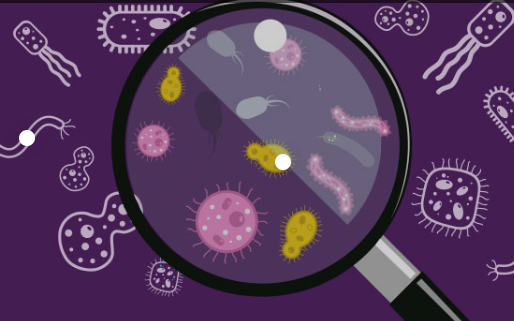What is Microbiology, Definitions, History, microorganisms and its Applications
What is Microbiology?
Microbiology is concerned with the study of microorganisms, whether bacteria, fungi, protozoa, or viruses. Thorough knowledge of their physiology, their genetics, and the interactions between them facilitates our understanding of the living world at the microscopic scale.

Thus, the simplicity of multiple microorganisms allows the study and understanding of similar physiological phenomena also found in more complex beings such as humans. The vast majority of microorganisms are beneficial and used in many industries.
Several microbial activities are involved in the food industry, such as cheese production, baking, alcohol, and flavor production. The production of human proteins using microorganisms is widespread in the pharmaceutical industry, such as insulin (diabetes), vaccines, and various therapeutic molecules (such as growth factors).
Genetic engineering, proteomics, genomics, and sequencing of microbial genomes have enabled major advances in the domestication of microorganisms.
However, some microorganisms are pathogenic, i.e. capable of causing disease in humans (the host), such as tuberculosis and plague (of bacterial origin), malaria ( protozoa) or AIDS (virus). To fight these infections, living beings (including humans) have developed a series of mechanisms grouped under the term “immune system”.
Thus, immunology is the study of the immune system, its cellular and molecular components, and its role in the fight against pathogenic organisms. Immunology, therefore, plays a key role in maintaining the integrity of the host and its survival. A very vigorous field of discovery currently aims to better understand host-pathogen interactions, i.e. the changes and adaptations observed on both sides when the microorganism is brought into contact with the host (and its immune system).
Also Read:
- What is Botany? – Meaning, History, Branches, Importance
- What is Genetics? Definitions, Molecular and Human Demand, its Examples
History of Microbiology
The Bulletin of Microbiology, founded in 1974, is a comprehensive academic journal sponsored by the Chinese Society of Microbiology and the Institute of Microbiology, Chinese Academy of Sciences. Published contents include:
basic microbiology research; agricultural microbiology research; industrial microbiology research; medical microbiology research; food microbiology research; environmental microbiology research; microbial functional genome research; microbial proteomics research; microbial model strain research; Microbial engineering and pharmaceutical research; industrialization of microbiological technological achievements and reform of microbiological teaching and research
This journal is the core journal of Chinese biological sciences. He has won the third prize in national outstanding scientific and technological journals, the third prize of outstanding scientific and technological journals of the Chinese Academy of Sciences, and the Beijing Excellent Science and Technology Journal Award. In 2000, he won the third prize in excellent journals of the Chinese Academy of Sciences. Journal Square” and is listed as a “dual effect” journal
Coming Predictions in Microbiology
As a microbiologist, your job prospects will be many and varied. Depending on what attracts you, you may choose to work in the fields of molecular biology or genetics, or in the field of medical or applied sciences, particularly in environmental quality or food quality control. You will be able to exercise your skills both in laboratories and in the field.
A career in college teaching is also possible: the master’s degree in microbiology as well as the specialized graduate diploma (DESS) in college teaching offer additional preparation valued by many colleges.
Conclusion
Our knowledge now allows us to uncover immunological approaches to treat certain diseases such as cancer. However, disturbances in these immune functions can lead to the destruction of healthy tissue, causing conditions such as diabetes or lupus. Immunology is an extremely active area of research and offers extraordinary opportunities for development.
In closing, these two disciplines make it possible to use microorganisms for the well-being of humans and to develop approaches and treatments to restore health.